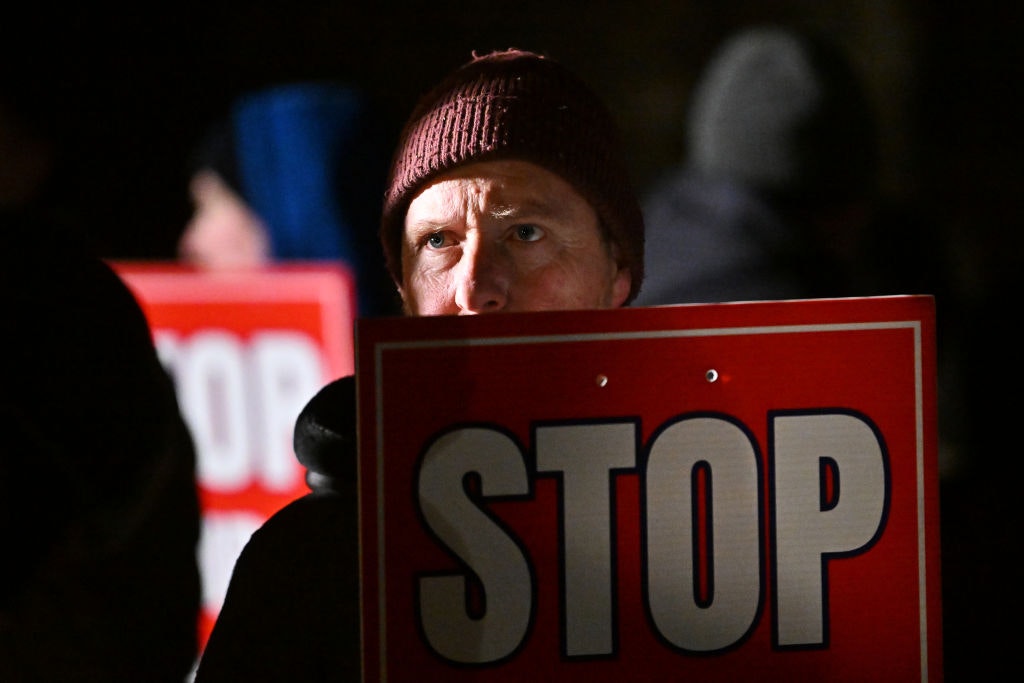Amtrak Joe
Tom Chesshyre on the railroad buff in the White House
This article is taken from the March 2021 issue of The Critic. To get the full magazine why not subscribe? Right now we’re offering three issue for just £5.
Trainspotters in America are known as “foamers” as they are said to foam at the mouth if they see an especially rare train. OK, so President Joe Biden may not quite fit that category, but he does go by the nickname of “Amtrak Joe”.
This is owing to his long-held travel preference for rolling along the “railroads” of the United States, usually on trains operated by Amtrak, a government-owned company that has been running American lines since 1971.

When Boris Johnson called to congratulate Biden on being sworn in, the conversation soon turned to their mutual enjoyment of trains (the prime minister suddenly revealing a hitherto hidden enjoyment of all things locomotive).
Biden’s soft spot perhaps runs a little deeper. The new president estimates he has travelled more than two million miles on 16,000 rides in the US. Over the years he has defended Amtrak against cost-cutters, whom he dubbed “the cement folks and the asphalt folks” out to “wreck” the service.
He has launched a presidential bid on a train (in 1988). He has ridden into Washington DC in the company of Barack Obama on inauguration day (in 2009). During his own presidential campaign, he visited the Rust Belt on his “Build Back Better Express”.
Yet his fondness for trains, which dates from his childhood in Delaware near the Pennsylvania Railroad tracks, conceals a tragic story.
He explained how travelling by train kept him in touch with life outside the Beltway
In 1972, Biden’s wife Neilia and daughter Naomi died in a car accident. This disaster struck a month after Biden, aged 29, had joined the Senate. So that he could raise his two surviving sons, he made the 110-mile, 90-minute daily commute by train from Wilmington, Delaware, to Washington.
During these many rides over three decades, Biden was not just covering ground. In an article for Amtrak’s magazine Arrive, he explained how travelling by train kept him in touch with life outside the Beltway (the US capital’s ring road) — not just with fellow commuters and staff, but also with those he imagined in houses seen through the carriage window in neighbourhoods representing all social classes.
Concerns about negative equity, healthcare bills, pension shortfalls, he says, were put in focus: “And every time I made that trip, it would inspire me to get up the next day, head back down to Washington, and give them the answers they’re looking for.”
Trains hold a special place in America’s past. The completion of the first transcontinental railway at Promontory Summit in Utah on 10 May, 1869, was a major moment, rich with symbolism as a “golden spike” was hammered in the final sleeper. News with a one-word message — “done” — was sent by telegraph across the country. The Wild West had been conquered; tracks had been laid from sea to shining sea.
For about 80 years it was boomtime. A web of lines spread out across the states, some passengers travelling in plush carriages designed by the New York state-born George Pullman during this heady golden age.
Slowly, however, a succession of challenges emerged: the invention in 1908 of the Ford Model T; yet more affordable vehicles; extensive highways; propeller planes; and, in the late 1950s, commercial jet aircraft.
American trains began a steep decline, culminating in the 1970s government rescue with Amtrak’s formation. Heavy losses have dogged the service up to 2019 when, despite record passengers (32.5 million), the annual deficit was $874.8 million. Could Amtrak Joe turn this round?
Latest 2020 figures, unsurprisingly, suggest he now has an even bigger mountain to climb. Passenger numbers fell to 16.8 million during the pandemic. A request has been sent to Congress for $4.9 billion in aid.
It is not just balance sheets, however, that will be of concern to Amtrak Joe. Biden has previously pointed out that if Amtrak’s north-east corridor — for example — were to close, seven new lanes of highway would need to be added to Interstate 95 to compensate, at vast expense both financially and environmentally.
Latest 2020 figures, unsurprisingly, suggest he now has an even bigger mountain to climb
Numbers matter, but so does the bigger picture, says the new president. So America’s trains would seem to be safe for now, even if debts mount.
Thank goodness for that. What better way to cross the mighty plains of the Midwest, traverse the towering Rockies and watch the Mississippi meander lazily by, perhaps listening to “Slow Train” by Bob Dylan or “This Land is Your Land” by Woodie Guthrie? Waves of wheatfields, gleaming grain silos, snowy peaks and small-town USA sliding past. Chilli dogs, nachos, sodas and ice-cold beers in the dining-carriage. Characters aplenty, keen to tell you their life stories. Out from Penn Station in New York, along the Hudson and on, with the Pacific Ocean waiting 3,000 miles away.
Enjoying The Critic online? It's even better in print
Try five issues of Britain’s newest magazine for £10
Subscribe














